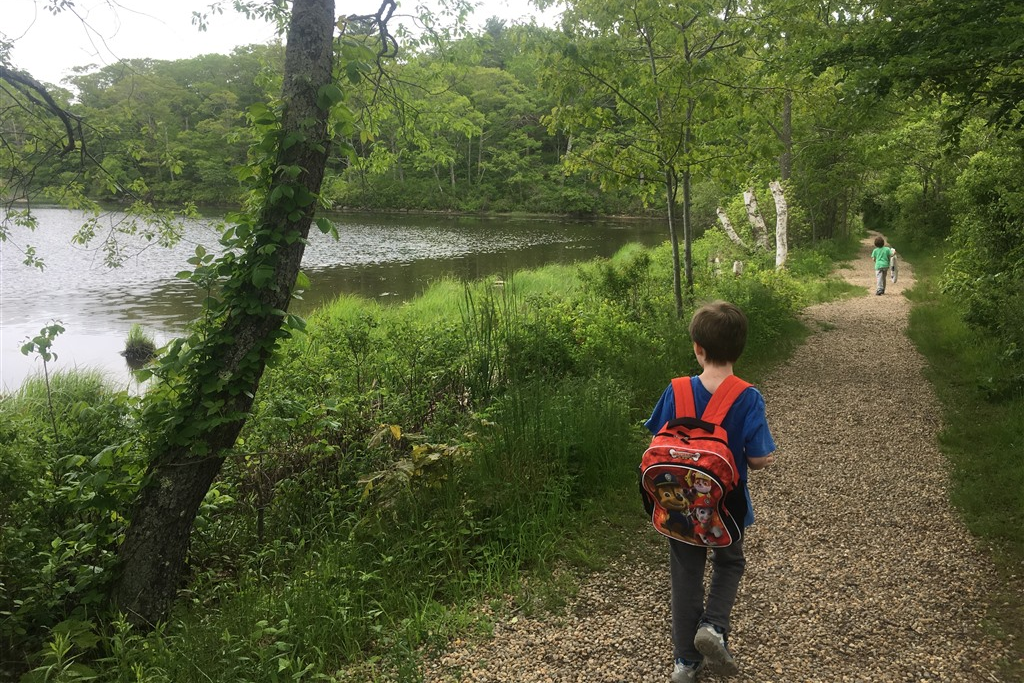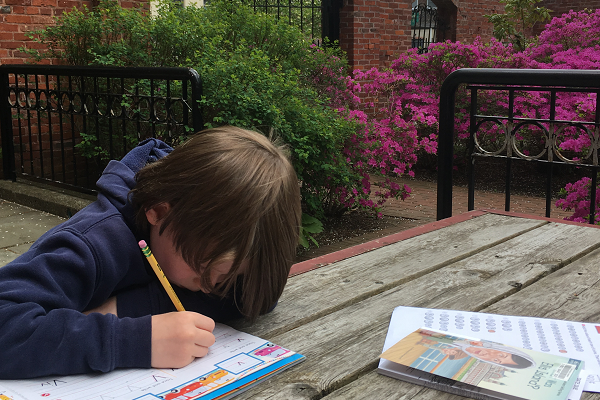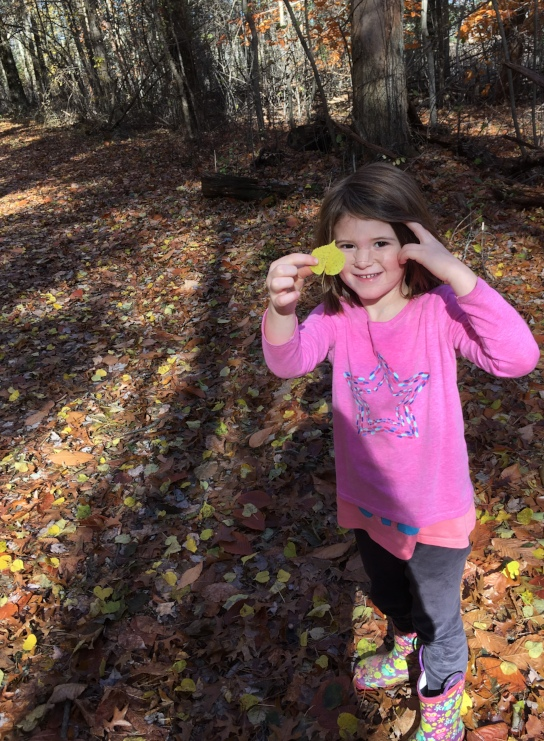As we continue our series sharing what curriculum our Homeschool Compass Team are choosing for their own homeschools this year, today we hear from Aimee who is homeschooling a 2nd grader and a 4th grader.

Aimee and her husband, Nick, both work outside the home so they share homeschooling responsibilities. Each day Aimee makes a simple spiral notebook checklist for each child outlining what schoolwork they need to accomplish that day. In their Charlotte Mason style homeschool, Nick helps the kids with their daily work in math, handwriting, spelling, and science in the mornings while Aimee works, and Aimee does literature and history readings, art, music, and outdoor adventures in the afternoons while Nick is working. Here’s what they will be using this year:
Math:
We’ve used Saxon Math in our homeschool since the beginning. I grew up using Saxon as a middle school and high school student so I’m very familiar with it, and I know it did a great job preparing me for college. I’m confident my kids will have a solid grounding in math with this program.
We certainly don’t follow the program exactly as written, and we don’t do every problem, but I love how much review is woven in. This year I’ll have one child using Math 5/4 and one child in Math 2.
Spelling:
We’ve tried a couple different spelling programs over the years and finally settled on Spelling You See. While Charlotte Mason advocates teaching spelling through copywork, I found we needed a little more intentional practice understanding how different letter sounds and blends work. Spelling You See does use copywork, but it also draws kids’ attention to certain spelling patterns in a way that has been helpful for us. My oldest will be finishing Level B shortly and moving on to Level C, and I will start my youngest on Level A midway through her second grade year.
Handwriting:

Both my kids use a basic handwriting workbook to practice forming their letters the correct way. For printing I like Handwriting Without Tears, and for cursive I like Zaner-Bloser. This year my second grader will be using the My Printing Book workbook and my fourth grader will be using the Zaner-Bloser Grade 3 student workbook.
Science:
Both my kids (and my husband!) love science so we’ve relied heavily on read-alouds supplemented with activities and experiments that my husband dreams up. We also spend a lot of time exploring the beautiful North Shore of Massachusetts and looking up the plants and animals we encounter.
These are some of our favorite science related books that we turn to again and again:
- Nature Anatomy by Julia Rothman
- Ocean Anatomy by Julia Rothman
- Fun with Nature: Take-Along Guide by NorthWord Press
- The Stars by H. A. Rey
- The Magic School Bus Series by Joanna Cole
- The Let’s Read and Find Out Science Series by HarperCollins
This year we’ll also be adding in some science related videos from Generation Genius to learn more about the properties of matter, the water cycle, and simple machines.
Phonics:
My second grader is still gaining confidence as a reader as we work our way through The Ordinary Parent’s Guide to Teaching Reading. Every day we spend 10 – 15 minutes working on her current lesson. I’ve used this resource to teach both my children to read, and I could not be happier with it. It’s simple and easy to use. Every day I just sit down, open the book, and we spend a few minutes working through the sounds and words for the day. By the time we make our way through the whole book, working a tiny bit at a time over several years, my children have all the skills they need to be strong, independent readers.
Literature and History:
I have a read-aloud time most afternoons with the kids where we work our way through several different Bible, literature and history readings. It’s similar to what many homeschoolers call their Morning Basket, though in our case it comes in the afternoon.
We often prepare a special snack or drink or sometimes the kids work on drawing or painting as I read. We usually start by singing the hymn we’re learning that month along with the Happy Hymnody community.
Then we read a short passage of Scripture and discuss it, followed by brief sections of literature or history books. We average 3 – 4 of these short readings per day.
Last year a typical afternoon session might have included a chapter from the book of Ruth, an Aesop’s Fable, a section of the Burgess Bird Book for Children, and a few pages of Benjamin Franklin by Ingri and Edgar Parin D’Aulaire.
Here are a few of the books we plan to work our way through this year:
- Trial and Triumph: Stories from Church History by Richard Hannula
- Shh! We’re Writing the Constitution by Jean Fritz
- Tree in the Trail by Holling Clancy Hollings
- Joan of Arc by Diane Stanley
- Brighty of the Grand Canyon by Marguerite Henry
Art & Music
Every year we pick one artist and one composer we’d like to study as a family. This year we chose Michelangelo and Beethoven.
We will study the composers by reading the corresponding books from Opal Wheeler’s Great Musician Series. These books give a biography of each composer with their musical pieces woven into the story, so we will read a chapter of Ludwig Beethoven and the Chiming Tower Bells and then listen to the musical work(s) referenced.
For art, we’ll be using the picture study prints from A Humble Place and Simply Charlotte Mason to study our chosen artists. If the pandemic allows for it, we will also make a few visits to nearby art museums, especially when they have exhibits featuring the artists we’re learning about.
Outdoor Time and Adventures

Our afternoons include a lot of time for visiting local parks and beaches, hiking our favorite trails, and getting together with friends. Living in New England, we love exploring all the natural beauty and historically rich landmarks we can find just a short distance from home.
For more curriculum picks, check out: